#bmw acceleration 0-100
Photo

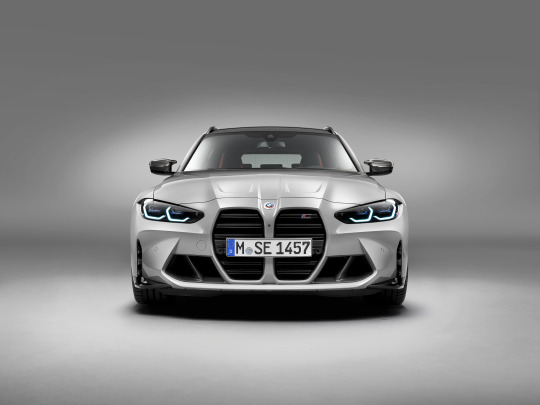
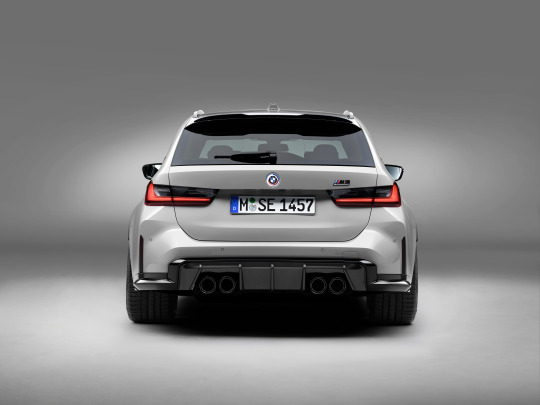
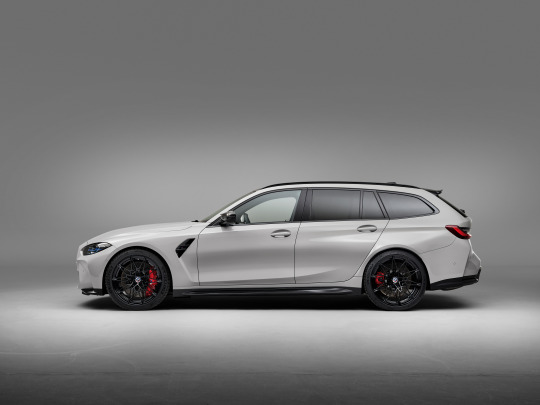

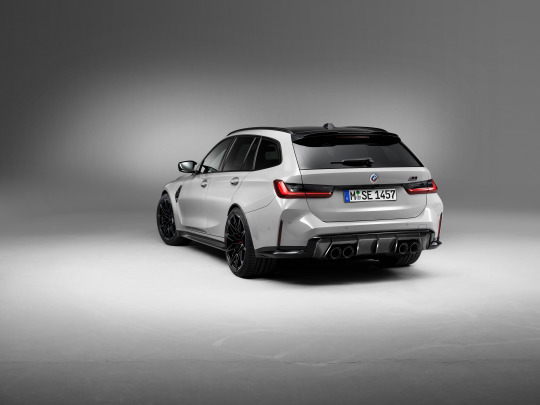

First Look: The BMW M3 Touring
BMW M is adding a new body variant to its line-up of high-performance models in the premium midsize class. The first-ever BMW M3 Touring combines authentic motor sport feeling with a very distinct character and a broader spread of practical qualities. Its powertrain technology is focused wholly on delivering beguiling performance and brings together the 375 kW/510 hp version of the six-cylinder in-line engine with M TwinPower Turbo technology, the eight-speed M Steptronic transmission with Drivelogic and the M xDrive all-wheel-drive system. The latest addition to the range is therefore available exclusively in BMW M3 Competition Touring with M xDrive form. The variable-use interior of the first BMW M3 Touring gives it a distinctive character profile, providing fresh scope for experiencing M-typical performance in everyday use. The new BMW iDrive including BMW Curved Display brings cutting-edge control/operation and connectivity tech to the cabin.
Standalone vehicle concept with extravagant design.
The first BMW M3 Touring goes to particularly impressive lengths to deliver on the traditional M promise of dynamic flair, agility and precision combined with unrestricted everyday practicality and mile-covering ability. Extravagant exterior design shines a particularly vivid spotlight on its unique vehicle concept, ensuring clear differentiation within the line-up and a dynamic aura unmatched by any rival.
Cleanly designed surfaces and athletic forms signal the standout performance potential of the BMW M3 Touring, as do the M-specific design cues firmly invested in the functional requirements of cooling air routing and aerodynamic balance. Chief among these are the vertically arranged, frameless BMW kidney grille, large side air intakes, powerfully sculpted wheel arches and prominently extended side skirts which, together with the attachment parts for the front and rear aprons, form a Black high-gloss band around the whole of the car. Other distinctive features are the M gills in the front side panels and the exhaust tailpipes integrated into the rear apron to the left and right of centre.
Whatever exterior colour is specified for the BMW M3 Touring, its roof will be finished as standard in Black high-gloss. The standard roof rails and the model-specific Gurney air-directing flap on the roof spoiler are painted in the same shade. The roof can also be finished in body colour as an option, and an M Carbon exterior package can also be found on the options list.
High-revving six-cylinder in-line engine.
The version of the six-cylinder in-line engine with M TwinPower Turbo technology developed for the Competition models in the BMW M3/M4 line-up produces maximum output of 375 kW/510 hp and peak torque of 650 Nm (479 lb-ft). Distinguished by the appetite for revs for which M engines are renowned, plus linear power delivery sustained into high load ranges, the 3.0-litre straight-six forms the basis for the unit in the new BMW M4 GT3 endurance racing car. Its cooling and oil supply systems are designed to handle extremely high longitudinal and lateral dynamic forces on the track. And the M-specific exhaust system with electrically controlled flaps generates an emotionally arresting soundtrack that brings an extra layer to the performance experience.
The engine joins forces with an eight-speed M Steptronic transmission with Drivelogic, which offers three gearshift programs and can be operated using shift paddles on the steering wheel. The engine’s power is channelled through to the road via the M xDrive all-wheel-drive system, which teams up with the Active M Differential at the rear axle. The need-based distribution of power across all four wheels optimises the traction of the BMW M3 Competition Touring with M xDrive, as well as its agility and directional stability. Acceleration from 0 to 100 km/h (62 mph) takes 3.6 seconds and the sprint from 0 to 200 km/h (124 mph) requires just 12.9 seconds. Opting for the M Driver’s Package increases the electronically limited top speed from 250 km/h (155 mph) to 280 km/h (174 mph).
As well as the basic 4WD setting, the driver can also select 4WD Sport mode via the Setup menu. This provides an even more intense experience of the M xDrive system’s rear-biased tuning. Switching off DSC (Dynamic Stability Control) brings 2WD mode – a.k.a. pure rear-wheel drive – into play.
134 notes
·
View notes
Text
1964 Volvo P1800
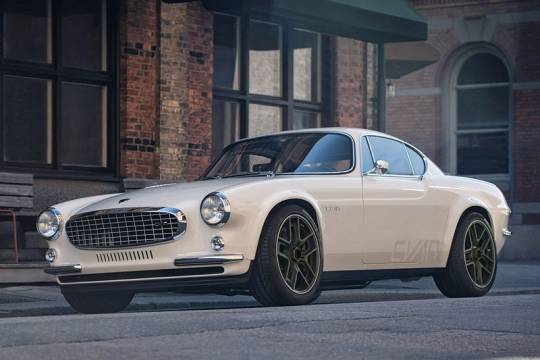
The 1964 Volvo P1800 is a classic car model produced by Volvo Cars from 1961 to 1973. It is a two-door sports car that gained popularity for its stylish design and reliability. The P1800 is often considered one of Volvo’s most iconic and beloved models.
Here are some key features and details about the 1964 Volvo P1800:
1. Design: The P1800 was designed by Pelle Petterson and inspired by Italian coachbuilder Frua’s prototype. It features a sleek and elegant design with flowing lines, a long hood, and a short rear end. The design was well-received and has stood the test of time, maintaining its classic appeal.
2. Engine: The 1964 P1800 was powered by a 1.8-liter B18 inline-four engine. It produced around 100 horsepower, providing a decent level of performance for its time.
3. Performance: The P1800 offered a balance between sportiness and comfort. It had respectable performance for its era, with a top speed of around 109 mph (175 km/h) and a 0–60 mph (0–97 km/h) acceleration time of approximately 11 seconds.
4. Reliability: Volvo’s reputation for safety and durability extended to the P1800. The car was known for its robust build quality and reliability, which contributed to its long-lasting popularity among enthusiasts.
5. Pop Culture Status: The Volvo P1800 gained significant recognition after being featured in the television series “The Saint” (1962–1969) starring Roger Moore as Simon Templar. The car became closely associated with the character and further elevated its status and desirability.
6. Production: Over the course of its production years, Volvo produced around 47,000 P1800 units. The 1964 model year was part of the early production years for the P1800.
If you are interested you should read about BMW F10
#car seat headrest#volvo#volvo 240#volvo cars#classic cars#cars of japan#cars and girls#luxury cars#fast cars#muscle cars#volvo trucks#how abandoned volvo appeared on tiny remote island surrounded by 38ft deep lake…which can even be seen on google maps#cadillac#toyota#cars#electric cars
3 notes
·
View notes
Text




BMW M3 Competition Sedan:
I'm a mountain climber now 🗻
Combined fuel consumption: 9.8 l/100 km. Combined CO2 emissions: 224–223 g/km. All data according to WLTP. Further information: www.bmw-m.com/wltp-disclaimer.
510 hp, 375 kW, 650 Nm, Acceleration (0-100 km/h): 3.9 s, Top speed (i/a limited): 250 km/h (with optional M Drivers Package: 290 km/h).
2 notes
·
View notes
Photo

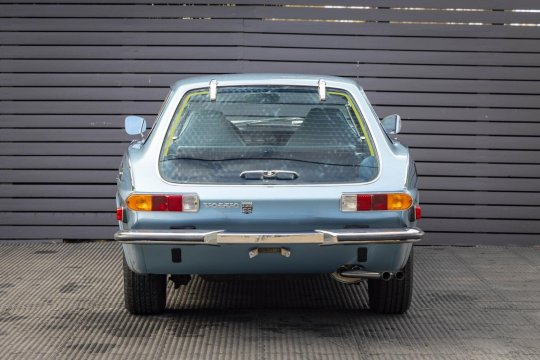

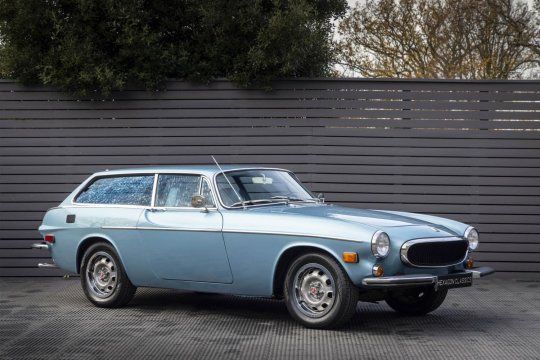
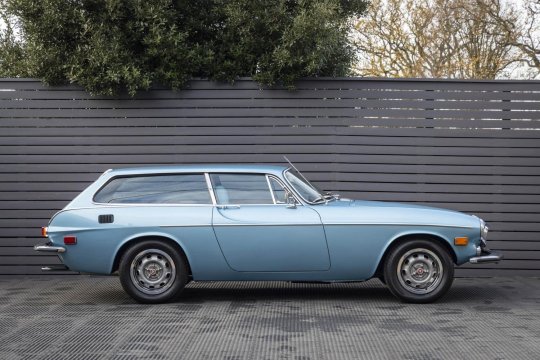




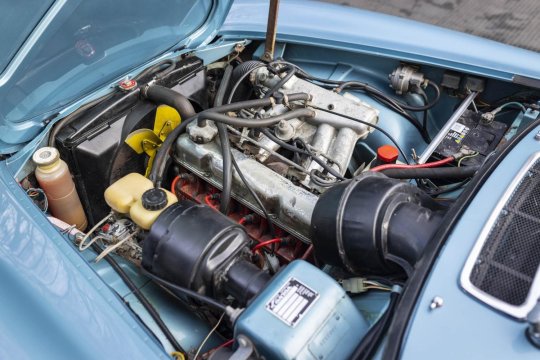
Volvo 1800 ES "Snow White's Coffin"
The 1800 ES was an evolution of the older P1800 coupe with chrome tail fins, so popular in the 1950s. However, Volvo's chief designer Jan Wilsgaard managed to successfully combine newly created flat rear end and elongated rear side windows making the car look fast even when stopped. The mighty hood promised an engine with plenty of power. Nicknamed "Snow White's Coffin", the Volvo became a "flying trunk" and a "glass rocket". But it's legendary for yet another reason: Behind the frameless tailgate, with its chrome glass-integrated hinges, gleaming door handle and giant glass flap, was the largest trunk in the entire sports car world. The fuel-injected 2.0-liter four-cylinder engine developed less power than a BMW 2002 Touring and the top speed of 185 km/h was clearly below that of a Porsche 911. Only the acceleration time from 0 to 100 in ten seconds was considered quite respectable in the sports environment.
29 notes
·
View notes
Text
The latest BMW i7 price in Malaysia market starts from RM 729,800. The i7 boasts impressive dimensions with a width of 2169 mm, a wheelbase of 3210 mm, and a length of 5238 mm, offering ample space for its 4-door design. Standing at 1512 mm in height, it accommodates 5 seats comfortably. Its powertrain features a lithium-ion battery with a capacity of 101.7 kWh, facilitating DC charging from 10% to 80% in just 34 minutes, with an estimated fast AC charging time from 0 to 100% in 5.5 hours. Emitting zero grams of carbon per kilometer, it operates solely on electricity, delivering 536 horsepower and 795 Nm of torque, capable of covering a driving range of 615 km with an acceleration of 4.7 seconds. Steering control is managed via a tilt and telescopic column, with electric power assistance.
The chassis is equipped with adaptive air suspension on both front and rear, along with ventilated disc brakes. It features a single-speed automatic gearbox, AWD drive type, and rides on 21-inch alloy wheels fitted with 255/40 ZR21 runflat tires. Notably, the i7 stands out for its eco-friendly performance, spacious interior, rapid charging capabilities, and advanced chassis control systems. However, potential buyers may consider its high initial cost, reliance on charging infrastructure, and limited availability of runflat tires as factors to weigh in their decision-making process.
Your question BMW i7?
Which question will you have about this car? Let’s justify these. There we are including the major questions and answers about this kereta. So, let’s start now.
What is the charging time for the i7 from 10% to 80%? The i7 can be charged from 10% to 80% in just 34 minutes using DC charging. How long does it take to charge the i7 from 0 to 100% with AC charging? AC charging from 0 to 100% takes approximately 5.5 hours for the i7. What is the driving range of the i7 on a single charge? The i7 offers an impressive driving range of 615 km on a single charge. What is the horsepower and torque output of the i7? The i7 delivers 536 horsepower and 795 Nm of torque, providing powerful performance. What is the acceleration time from 0 to 100 km/h for the i7? The i7 accelerates from 0 to 100 km/h in just 4.7 seconds, offering swift acceleration. What type of suspension does the i7 feature? The i7 is equipped with adaptive air suspension on both the front and rear. What size wheels does the i7 come with? The i7 comes with 21-inch alloy wheels fitted with 255/40 ZR21 runflat tires for enhanced performance and durability. What is the price of BMW i7? The latest BMW i7 price in Malaysia market starts from RM 729,800.
Pros and Cons:
ProsConsRapid DC charging capabilityHigh initial costImpressive driving rangeReliance on charging infrastructureSpacious interiorLimited availability of runflat tires
0 notes
Video
vimeo
The Cars that are more fun to drive than they look. from Our Auto Expert on Vimeo.
In a landscape dominated by sleek sports cars and luxury sedans, a surprising shift is happening. The underdogs of the automotive world — often labeled as "boring" by enthusiasts — are tearing up the tarmac with an unexpected twist of fun and performance. Leading this pack are models from BMW, Toyota, and Hyundai, each bringing something novel to the table, challenging the conventional wisdom of what makes a car exciting.
First up, the BMW X2, a vehicle that's breaking molds with its sportier, avant-garde design. This second-generation model stands out with its pronounced coupé silhouette and expanded dimensions, offering a unique blend of aesthetics and functionality. It's not just a step but a leap forward, incorporating dynamic lines and an assertive stance that promises to turn heads.
But the X2 isn't BMW's only card in this game. The debut of the BMW iX2 xDrive30 marks the brand's accelerated push into electric mobility. This all-electric variant boasts a robust 313 hp, capable of darting from 0 to 100 km/h in just 5.6 seconds. With a range of up to 279 miles, it's clear BMW is setting a new benchmark for electric driving pleasure without sacrificing performance.
Toyota, a brand traditionally associated with reliability over thrill, is flipping the script with the RAV4 Prime. This plug-in hybrid surprises with a 0-60 mph time of just 5.4 seconds, proving that eco-friendly vehicles can deliver heart-pounding excitement.
Similarly, the Hyundai Kona EV merges a 201 hp electric motor with an impressive 295 lb-ft of torque, offering an engaging drive that belies its compact, unassuming package. And let's not overlook the Toyota Prius, which, in "power" mode, offers an acceleration experience that defies its humble reputation.
Scheduled for a worldwide launch in March 2024, the new BMW X2 and iX2 lineup is a testament to BMW's commitment to innovation, performance, and sustainability. These models will roll off a flexible assembly line at BMW Group Plant Regensburg, highlighting a production process as forward-thinking as the vehicles themselves. Germany is still considering an IX2 for the USA but it will not come for now.
The exterior design of the new X2 series features striking LED headlights and an optional BMW Iconic Glow contour lighting, creating an appearance as dynamic as its driving capabilities. Inside, the modern premium ambiance is enhanced with sporty touches, such as the BMW Curved Display and Veganza perforated variant seats, marrying comfort with performance.
Technologically, the X2 series is equipped with automated driving and parking systems, BMW iDrive with QuickSelect, and a suite of advanced driver assistance systems, ensuring a driving experience that is not only thrilling but also safe and comfortable.
In conclusion, these vehicles are rewriting the script on what it means to be "boring." With unexpected performance stats, cutting-edge technology, and a commitment to sustainable mobility, they challenge preconceived notions and prove that excitement on the road comes in various forms. As these models hit the streets, they're sure to spark conversations and turn the heads of both enthusiasts and skeptics alike, proving that sometimes, the most thrilling rides come from the places you least expect.
0 notes
Text
Leading the Range Race – Top 5 Electric Cars with Longest Range in India

Welcome to a thrilling journey into the future of sustainable transportation in India! In this comprehensive exploration, we delve into the realm of electric vehicles, showcasing the top 5 electric cars with the longest range that are setting new standards in the country.
Hyundai Kona EV
Claimed Range: 452 kms
Top Speed: 165 kmph
Battery Capacity: 39.2 kWh
0 to 100 kmph: 9.7 sec
Price: ₹23.84 Lakh
Power-Packed Performance: The Hyundai Kona EV not only boasts an impressive ARAI claimed range but also delivers a thrilling driving experience with its 136 PS and 395 Nm of torque. It accelerates from 0 to 100 kmph in just 9.7 seconds.Battery & Charging Solutions: Offering flexibility, the Kona EV provides three charging options, including a 50 kW fast charger that can charge the battery from 0 to 80 percent in 57 minutes.Feature-Rich Interior: Inside, enjoy a sunroof, automatic air conditioning, wireless phone charging, ventilated front seats, cruise control, and multiple driving modes.Hyundai Kona EV Price: Affordable luxury at its best, with a price range of Rs 23.84 lakh to Rs 24.03 lakh.Robust Safety Measures: Comprehensive safety features include six airbags, electronic stability control, hill assist, and more.
Audi e-Tron GT
Claimed Range: 500 kms
Top Speed: 245 kmph
Battery Capacity: 93.4 kWh
0 to 100 kmph: 4.1 sec
Price: ₹1.7 Crore
Performance Excellence: The Audi e-Tron GT combines an exceptional range with a top speed of 245 kmph, showcasing its prowess as a high-performance electric car.Powerful Battery: With a 93 kWh battery pack, the e-Tron GT accelerates from 0 to 100 kmph in a mere 4.1 seconds.Technological Features: Cutting-edge features include a 12.3-inch digital driver display, three-zone temperature control, wireless charging, and a 10.1-inch touchscreen infotainment system.Audi e-Tron GT Price: A luxurious experience with prices ranging between Rs 1.79 crore and Rs 2.04 crore.Audi e-Tron GT Models: Two distinct models cater to varied driving preferences – the e-Tron GT and RS e-Tron GT.
BMW i4 EV
Claimed Range: 590 kms
Top Speed: 190 kmph
Battery Capacity: 83.9 kWh
0 to 100 kmph: 5.7 sec
Price: ₹69.9 Lakh
BMW i4 Battery & Performance: The i4's 83.9 kWh battery pack empowers the electric motor to deliver a robust 340PS and 430Nm of torque, providing an exceptional driving experience.Luxurious Features: Features include a 14.9-inch touchscreen infotainment system, powered tailgate, ambient lighting, and a 17-speaker Harman Kardon audio system.Safety Assurance: Safety features include six airbags, dynamic traction control, stability control, and ISOFIX child seat anchors.BMW i4 EV Price: A competitive price tag of Rs 69.9 lakh for a premium electric car experience.Single Trim Variant: The BMW i4 is available in a single eDrive40 trim.
Kia EV6
Claimed Range: 708 kms
Top Speed: 192 kmph
Battery Capacity: 77.4 kWh
0 to 100 kmph: 7.3 sec
Price: ₹61 Lakh
Kia EV6 Swift Performance: The EV6 showcases fast charging capabilities, charging from 10% to 80% in just 18 minutes.Dual Drivetrain Options: Choose between single-motor rear-wheel drive and dual-motor all-wheel drive, delivering 229PS and 325PS, respectively.Features & More: Luxurious features include a 14-speaker Meridian sound system, wireless phone charging, dual-zone climate control, and dual curved 12.3-inch displays.Safety Assurance: Prioritizing safety with eight airbags, electronic stability control, and a range of Advanced Driver Assistance Systems.Kia EV6 Price: An attractive price range from Rs 60.95 lakh to Rs 65.95 lakh.Top-of-the-Line GT Trim: The Kia EV6 offers a single top-of-the-line GT trim for those seeking the pinnacle of electric car technology and luxury.
Mercedes-Benz EQS 580 4Matic EV
Claimed Range: 857 kms
Top Speed: 250 kmph
Battery Capacity: 107.8 kWh
0 to 100 kmph: 5.9 sec
Price: ₹1.55 Crore
Mercedes-Benz Battery: A substantial 107.8 kWh battery pack powers the EQS, providing an all-wheel-drive system with 523 PS and 855 Nm of torque.Luxurious Features: The EQS is loaded with features, including a 56-inch MBUX Hyperscreen, ambient lighting, a 15-speaker Burmester sound system, and powered seats with massage functions.Safety Assurance: Nine airbags, Advanced Driver Assistance Systems, and various safety features ensure a secure driving experience.Mercedes-Benz EQS EV Price: Prices ranging from Rs. 1.55 crore to Rs. 2.45 crore, offering accessibility to a broader range of buyers.Dual Variants: The EQS is available in two variants – EQS 580 4MATIC and AMG EQS 53 4MATIC+, providing versatility in performance and features.
Conclusion: As we navigate the rapidly evolving landscape of electric cars in India, these top 5 electric cars with the longest range not only address range anxiety but also redefine the concept of sustainable and stylish driving. With impressive ranges, cutting-edge features, and diverse pricing options, these electric vehicles pave the way for a greener, cleaner, and more exciting automotive future.
To read more, click here.
#Top 5 Electric Cars#Electric Cars with Longest Range in India#Hyundai Kona EV#Audi e-Tron GT#BMW i4 EV#Kia EV6#Mercedes-Benz EQS
0 notes
Text
Jaguar F Pace Engines: A Guide for Car Enthusiasts
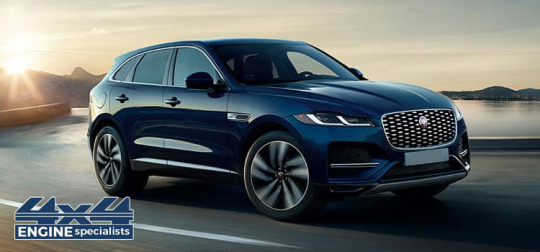
If you are looking for a luxury SUV that combines performance, style and comfort, you might want to consider the Jaguar F Pace. This model offers a range of engines to suit different driving needs and preferences. We will explore the features, benefits and drawbacks of each engine option, as well as answer some frequently asked questions.
The Jaguar F Pace is a mid-size crossover SUV that was launched in 2016. It is the first SUV from Jaguar, and it competes with other premium models such as the Audi Q5, BMW X3 and Mercedes-Benz GLC. The F Pace is based on the same platform as the Jaguar XE and XF sedans, and it shares some of their engines and technologies.
Engine Options
The Jaguar F Pace offers four engine options: two petrol and two diesel. Each engine has its own characteristics, advantages and disadvantages. Here is a brief overview of each engine:
2.0L i4 Petrol:
This is the base engine for the F Pace, and it produces 250 horsepower and 365 Nm of torque. It is a turbocharged four-cylinder engine that delivers decent performance and fuel efficiency. It can accelerate from 0 to 100 km/h in 6.8 seconds, and it has a combined fuel consumption of 8.1 L/100 km.
3.0L V6 Petrol:
This is the most powerful engine for the F Pace, and it produces 380 horsepower and 450 Nm of torque. It is a supercharged six-cylinder engine that delivers exhilarating performance and sound. It can accelerate from 0 to 100 km/h in 5.5 seconds, and it has a combined fuel consumption of 10.7 L/100 km.
2.0L i4 Diesel:
This is the most fuel-efficient engine for the F Pace, and it produces 180 horsepower and 430 Nm of torque. It is a turbocharged four-cylinder engine that delivers smooth performance and low emissions. It can accelerate from 0 to 100 km/h in 8.7 seconds, and it has a combined fuel consumption of 5.3 L/100 km.
3.0L V6 Diesel:
This is the most torquey engine for the F Pace, and it produces 300 horsepower and 700 Nm of torque. It is a turbocharged six-cylinder engine that delivers strong performance and towing capacity. It can accelerate from 0 to 100 km/h in 6.2 seconds, and it has a combined fuel consumption of 6.0 L/100 km.
Engine Features
The Jaguar F Pace engines are equipped with various features that enhance their performance, efficiency and reliability. Some of these features are:
Ingenium Technology:
This is a family of engines that are designed and built by Jaguar Land Rover. They are lightweight, compact and modular, which means they can be adapted to different models and configurations. They also use advanced technologies such as variable valve timing, direct injection, twin-scroll turbocharging and stop-start systems to optimize power, torque, fuel economy and emissions.
All-Wheel Drive:
This is a system that distributes power to all four wheels of the vehicle, depending on the driving conditions and mode. It improves traction, stability and handling on different terrains and weather situations. The F Pace also has an Intelligent Driveline Dynamics (IDD) feature that monitors the vehicle's dynamics and adjusts the torque distribution accordingly.
Adaptive Dynamics:
This is a system that monitors the vehicle's movements and adjusts the suspension settings accordingly. It enhances comfort, control and agility on different road surfaces and driving styles. The F Pace also has an Adaptive Surface Response (ASR) feature that recognizes different types of surfaces such as snow, ice or gravel and adapts the throttle, steering and braking accordingly.
Configurable Dynamics:
This is a system that allows the driver to customize the vehicle's performance settings according to their preference. It enables the driver to adjust the throttle response, gear shift speed, steering weight and suspension stiffness using a touchscreen or a rotary dial.
Engine Benefits
The Jaguar F Pace engines offer several benefits for car enthusiasts who value performance, quality and versatility. Some of these benefits are:
Choice:
The F Pace offers four engine options that cater to different driving needs and preferences. Whether you want more power, more efficiency or more torque, you can find an engine that suits you.
Performance:
The F Pace engines deliver impressive performance in terms of acceleration, speed, handling and sound. They are responsive, smooth and refined, which makes driving enjoyable and exciting.
Efficiency:
The F Pace engines are also efficient in terms of fuel consumption, emissions and maintenance. They use advanced technologies that optimize power output while reducing fuel usage and environmental impact.
Reliability:
The F Pace engines are reliable and durable, as they are built with high-quality materials and components. They are also tested and validated under rigorous conditions to ensure they meet the highest standards of safety and performance.
Engine Drawbacks
The Jaguar F Pace engines also have some drawbacks that car enthusiasts should be aware of before buying. Some of these drawbacks are:
Cost:
The F Pace engines are expensive to buy and run, as they are premium products that require premium fuel and service. The higher-end engines also have higher taxes and insurance rates, which add to the ownership cost.
Availability:
The F Pace engines are not widely available in some markets, as they are subject to different regulations and demand. Some engines may have limited supply or long waiting times, which can be frustrating for buyers.
Compatibility:
The F Pace engines are not compatible with some features or accessories that may be desired by some buyers. For example, the 3.0L V6 petrol engine is not compatible with the panoramic roof, the 2.0L i4 diesel engine is not compatible with the sport exhaust, and none of the engines are compatible with the tow bar.
FAQs
Here are some frequently asked questions about the Jaguar F Pace engines:
Which engine is the best for the F Pace?
There is no definitive answer to this question, as it depends on your personal preference, budget and driving style. However, some general guidelines are:
If you want the most powerful and thrilling engine, go for the 3.0L V6 petrol.
If you want the most fuel-efficient and eco-friendly engine, go for the 2.0L i4 diesel.
If you want the most torquey and capable engine, go for the 3.0L V6 diesel.
If you want a balanced and versatile engine, go for the 2.0L i4 petrol.
How often do I need to service the F Pace engines?
The F Pace engines have a service interval of one year or 16,000 km, whichever comes first. You should follow the recommended service schedule and use only authorized dealers and parts to ensure the optimal performance and longevity of your engine.
How do I know which engine is in my F Pace?
You can identify your engine by looking at the badge on the rear of your vehicle. The badge will have a letter and a number that indicate the type and size of your engine. For example:
P250: 2.0L i4 petrol with 250 horsepower
S380: 3.0L V6 petrol with 380 horsepower
D180: 2.0L i4 diesel with 180 horsepower
D300: 3.0L V6 diesel with 300 horsepower
Read the full article
0 notes
Text
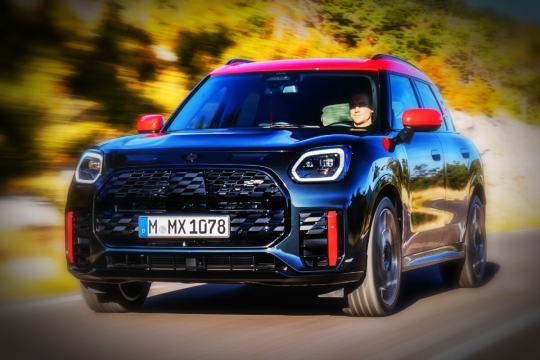
It’s a Countryman with the works!
BMW has pulled the covers off a new Mini John Cooper Works Countryman. It’s the one with a powerful 2.0-litre four-cylinder engine that goes like the clappers. With 221kW of power and 400Nm of torqye, the sleek Countryman accelerates the car from 0 to 100 km/h in just 5.4 seconds and on to a top speed of 250 km/h. The new model offers more space, comfort and safety. Allegedly, thanks to its ALL4 all-wheel drive system — it’s also very […]
https://cars4starters.com.au/its-a-countryman-with-the-works/?feed_id=28451&_unique_id=6553fdc4d4b6b
0 notes
Text
The 3-rd best-selling model 🏆🏆🏆 of BMW is not just a car. It's real monster 💪🏼 on the road. BMW X5 e70 facelift came out in 2011 to destroy all other car models in the class. The highest performance model
M X5 is equipped with 4.4 I V8 engine and twine turbo. It has 567 hp and reach 0-60mph or 0-100 km/h only for 4 seconds. The king of the road - BMW X5 e70 facelift model. Just amazing.

Amazing BMW x5 E70 acceleration see below 👇.
youtube
#bmw#x5#e70#bmw e70#bmw x5#bmw m#bmw x5 m#bmw x5 e70#muscle cars#monster car#powerful car#bmw club#car#cars#youtube#auto#acceleration
3 notes
·
View notes
Text
Sustainable Luxury: A New Era of Eco-Friendly Cars
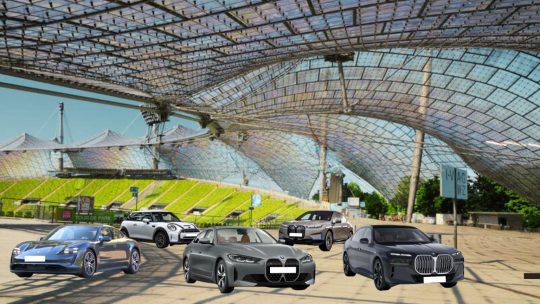
The rise of eco-friendly options has brought forth a new era in the luxury car industry.With climate change concerns and a growing interest in sustainable living, car manufacturers are now investing in alternative energy sources and technologies to create high end vehicles that are both efficient and environmentally friendly. In India,brands such as BMW, MINI, Porsche etc. are leading the way in this revolution.
BMW has been working to create sustainable luxury cars that offer high-performance and zero emissions. They have a perfect set of options when it comes to sustainability commitment such as BMW i4, BMW i7 & BMW iX. The most affordable BMW EV is BMW i4 as of now. BMW’s connected charging service is designed to provide convenience to BMW EV owners, by locating the nearest charging station along their route for easy access.
The BMW i4’s rear-wheel drive delivers impressive driving performance, allowing it to reach 0-100 km/h in just 5.7 seconds and a top speed of 190 km/h.
The BMW i7 delivers 400kW (544 hp) of power and up to 745 Nm of torque for dynamic acceleration, reaching 0 to 100 km/h in just 4.7 seconds. Its innovative eDrive propulsion concept allows for silent and emission-free driving.
And the BMW iX xDrive40 delivers impressive electric performance with 326 hp, accelerating from 0 to 100 km/h in just 6.1 seconds. These were just a few of the many BMW EV features.
MINI, a subsidiary of BMW, is another brand that has been making strides in sustainable luxury cars. Their new MINI Cooper SE is not only sleek and stylish, but also offers zero emissions and low operating costs. Embrace a new era of driving with the all-electric MINI, delivering a smooth and powerful acceleration of 0-100 km/h in only 7.3 seconds, without any lag or gearshift interruptions.
Porsche, a brand known for their high-end sports cars, has also been exploring sustainable luxury car options. Even the Porsche reviews include Taycan as a prime example of a vehicle that maintains high performance even while charging. Its 800-volt architecture generates up to 270kW of charging power, enabling a 100km range in just five minutes of charging under ideal conditions. With this technology, the Taycan is always prepared for its driver’s ultimate desire – the thrill of driving.
In India, the government has been working to encourage the adoption of electric vehicles by offering incentives and subsidies. With more and more car manufacturers investing in eco-friendly options, luxury car brands are now incorporating these technologies into their high-end models.
The future of sustainable luxury cars looks promising, with advancements in battery technology and charging infrastructure making electric cars even more accessible and convenient. As India continues to work towards a greener future, it is likely that we will
see more luxury car brands like BMW, MINI, and Porsche leading the charge in sustainable luxury cars.
For enquiries related to any Electric car from BMW, MINI, and Porsche, please reach out to us at Infinity Cars. Email: [email protected]
1 note
·
View note
Text
The electric hypercar Rimac Nevera set 23 new records on the same day at the Automotive Testing Papenburg (ATP) site in Germany
(Motorsport-Total.com/Motor1) - The Rimac Nevera continues to break records as the electric hypercar has had an eventful day at a test track in Germany. He managed to set no fewer than 23 records in one day at the Automotive Testing Papenburg (ATP) facility, where he made the most of the 4-kilometre straights.
[caption id="" align="aligncenter" width="620"] Rimac Nevera sets 23 records in Papenburg on Zoom[/caption]
Dewesoft and RaceLogic representatives were on hand to independently verify the times and confirm the car was faster than advertised.
Fitted with street-legal Michelin Cup 2 R tyres, the Nevera sprinted to 100 km/h in just 1.74 seconds, beating Rimac's official time of 1.85 seconds. It should be noted that the sprint was not entirely from a standstill, as the car rolled a good 30 centimeters during the run. The Croatian brand points out that the substrate for the test was not specially prepared.
As CEO Mate Rimac has hinted on social media, the Nevera has set a new world record for the fastest production vehicle, accelerating from 0 to 400 km/h and then back to 0. It took the Nevera 29.94 seconds to complete this task, while the Koenigsegg Regera took 31.49 seconds in 2019 at Råda Airfield in Sweden.
Rimac Nevera sets 23 records in Papenburg
Aside from the records, the Nevera sported a special livery in a nod to Mate Rimac's own BMW e-M3, an all-electric 3 Series E30 from 1984 that broke more than a few records in 2012. Today, 11 years later, the company's founder is pleased that the new hypercar reaches a speed of 400 km/h and returns to zero faster than a McLaren F1 (350 km/h).
0-60 mph
Racelogic (Sekunden): 1.74
Dewesoft (Sekunden): 1.74
0-100 km/h
Racelogic (Sekunden): 1.82
Dewesoft (Sekunden): 1.81
0-200 km/h
Racelogic (Sekunden): 4.42
Dewesoft (Sekunden): 4.42
0-300 km/h
Racelogic (Sekunden): 9.23
Dewesoft (Sekunden): 9.22
0-400 km/h
Racelogic (Sekunden): 21.32
Dewesoft (Sekunden): 21.31
100-200 km/h
Racelogic (Sekunden): 2.59
Dewesoft (Sekunden): 2.59
200-300 km/h
Racelogic (Sekunden): 4.81
Dewesoft (Sekunden): 4.79
200-250 km/h
Racelogic (Sekunden): 2.00
Dewesoft (Sekunden): 2.00
0-100-0 km/h
Racelogic (Sekunden): 4.03
Dewesoft (Sekunden): 3.99
0-200-0 km/h
Racelogic (Sekunden): 8.85
Dewesoft (Sekunden): 8.86
0-300-0 km/h
Racelogic (Sekunden): 15.68
Dewesoft (Sekunden): 15.70
0-400-0 km/h
Racelogic (Sekunden):
Dewesoft (Sekunden):
29.94 29.93
1/4 Meile
Racelogic (Sekunden): 8.26
Dewesoft (Sekunden): 8.25
1/8 Meile
Racelogic (Sekunden): 5.46
Dewesoft (Sekunden): 5.44
1/2 Meile
Racelogic (Sekunden): 12.82
Dewesoft (Sekunden): 12.83
Stehende Meile
Racelogic (Sekunden): 20.62
Dewesoft (Sekunden): 20.59
0-100 mph
Racelogic (Sekunden): 3.23
Dewesoft (Sekunden): 3.21
0-120 mph
Racelogic (Sekunden): 4.19
Dewesoft (Sekunden): 4.19
0-130 mph
Racelogic (Sekunden): 4.74
Dewesoft (Sekunden): 4.75
0-250 mph
Racelogic (Sekunden): 21.89
Dewesoft (Sekunden): 21.86
60-130 mph
Racelogic (Sekunden): 2.99
Dewesoft (Sekunden): 2.99
0-200 mph
Racelogic (Sekunden): 10.86
Dewesoft (Sekunden): 10.86
In addition to the 22 records above, the Rimac Nevera also set a new record for the shortest distance needed to stop from a speed of 100 km/h. It stopped at 29.12 meters (95.53 feet) as measured by Racelogic, or at 28.96 meters (95 feet) verified by Dewesoft.
0 notes
Text

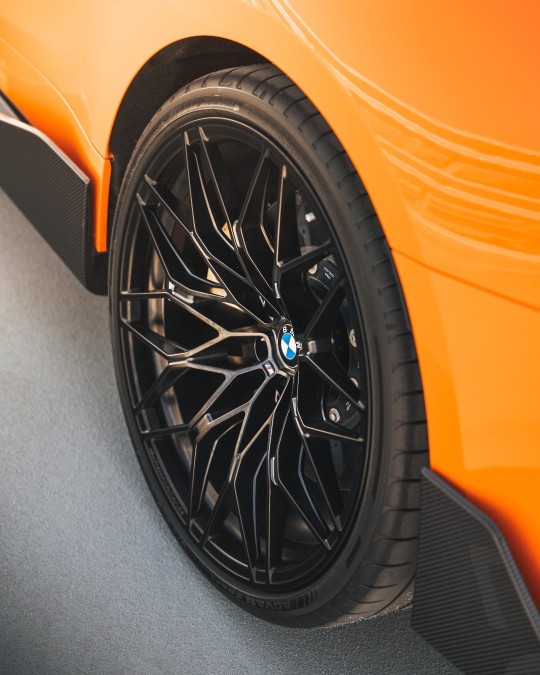
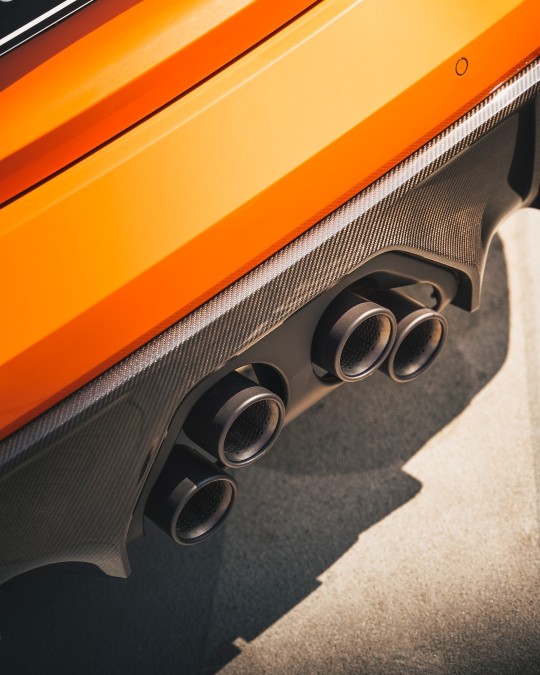

Make that hood ✨pop✨
BMW M4 Competition Coupé:
Combined fuel consumption: 9.8 l/100 km. Combined CO2 emissions: 224–223 g/km. All data according to WLTP. 510 hp, 375 kW, 650 Nm, Acceleration (0-100 km/h): 3.9 s, Top speed (i/a limited): 250 km/h (with optional M Drivers Package: 290 km/h). Further information: www.bmw-m.com/wltp-disclaimer
Paint finish shown: BMW Individual Fire Orange III
Check the link in BMW M’s bio for the BMW Individual Visualiser to see more BMW Individual colour options.
0 notes
Text
A Brief Guide On E-C4 Citroen Performance Upgrades
Citroen Performance Upgrades Evaluation Of E-C4
People are using electric vehicles on a vast scale all around Europe. Citroen e-cars are in high demand due to different types of Citroen accessories which make the Citroen E-C4 extraordinarily different.

In this blog, we discuss some of the salient features of this fantastic car, along with the Citroen performance upgrades. Though there are a few setbacks in the model's overall performance, it is far better than other competitors.
The use of double and single hydraulic brakes on the front and rear suspensions, respectively, delivers an exquisite sensation in addition to the interior insulation. Citroen's vehicles are distinguished by Advanced Comfort Suspension (Progressive Hydraulic Cushions).
The e-C4 is no exception since driving around town is extremely comfortable. The suspension technology easily absorbs irregularities, speed bumps, and potholes. When it comes to driving comfort, it is by far the best in class.
Combined with its incredibly light steering wheel, the e-C4 is in a class of its own - even when compared to more expensive rivals. However, its softer driving setting limits its performance in more difficult conditions. The e-C4 exhibits some body roll at high speeds and lacks driver feel.
One feels separated from the front axle, especially in Sport driving mode, which attempts to improve driving dynamics. However, the same could be said for the vast majority of its competitors; if you want an enhanced experience, you'll need to spend more for the BMW iX3.
Its front-mounted motor and 50 kWh battery pack provide 100 kW and 300 Nm of torque. The top speed is likewise restricted to 93 mph. In comparison, the Hyundai Kona Electric (64 kWh variant) produces 150 kW, has 395 Nm of torque, and accelerates to 60 mph in 6.91 seconds.
On the plus side, Citroen's lower power output results in no front-wheel spin or torque steer, as seen on Hyundai Group vehicles - the vehicles are front-wheel drive (FWD). We predicted that straight-line speed and driving dynamics would be low on Citroen's priority list.
Battery Performance Of E-C4
To recharge the vehicle's 50 kWh battery pack much faster, a CCS port supports up to 100 kW of input. It allows the e-C4 to get up to 80% from empty in around 30 minutes. A more commonly found 50 kW charge point will take 45 minutes instead.
At a wall box or slower public charger with a 7 kW output, it'll take 7hrs 30mins to go from 0-100% using the Type 2 port. Should you have access to a three-phase 11 kW charger, the optional £300 11 kW onboard charger will slightly reduce the charge time.
Unsurprisingly, a three-pin wall socket will take over 24 hours to recharge to full. The Citroen C4 was a small gasoline or diesel automobile. The first-generation vehicle debuted in 2004 and was revised seven years later with a new design and engine options.
It changed in 2020 when the PSA Group – now Stellantis – unveiled its third-generation model. The C4 is a compact SUV and is available as an all-electric vehicle called the e-C4 (or -C4). The e-C4 has the same 100 kW (136 hp) front-mounted motor and 50 kWh battery pack.
Compared to similarly priced competitors such as the MG ZS EV, Hyundai Kona Electric, Vauxhall Mokka-e, and Peugeot e-2008, the Citroen delivers a longer driving range on a single charge. You should drive in B-mode to get the most out of your vehicle.
It must be activated each time you enter the cabin by pressing a button on the center console. The level of deceleration while lifting off the accelerator pedal is relatively modest in the stated mode; one cannot drive with only one pedal.
It's disappointing that Citroen still needs to optimize B-mode or provide any form of regenerative braking mode customization. We can witness quick Citroen performance upgrades to rectify this problem.
Although these features are satisfactory, if you want to add to your car's performance, you can add Citroen performance car parts to boost the value of your vehicle. Buy high-performance car parts from MTC Motorsport.
Original Source: https://bityl.co/GHm9
0 notes
Text
The latest BMW 5 Series Sedan 530i M Sport price in Malaysia market starts from RM 387,120. The BMW 530i M Sport boasts a cargo volume of 530 liters, with dimensions including a length of 4963 mm, width of 1868 mm, and height of 1457 mm. It offers seating for five with front headroom of 1034 mm and rear headroom of 977 mm. The car features a 2.0L petrol engine with 4 cylinders and 16 valves, utilizing a direct injection fuel supply system and achieving a compression ratio of 10.2:1. With a power output of 252 hp and torque of 350 Nm, it accelerates from 0 to 100 km/h in 6.4 seconds with a fuel consumption rate of 5.8 liters per 100 kilometers. The powertrain is managed by an 8-speed automatic gearbox, with rear-wheel drive and steering wheel gearshift paddles for added control.
Steering is facilitated by electric power steering with tilt and telescopic adjustment. Chassis control systems include ventilated disc brakes both at the front and rear, along with a double wishbone front suspension and multi-link rear suspension setup. The car rides on 19-inch alloy wheels with runflat tires sized 245/40 R19. Notable features include a spacious cargo area, powerful engine, smooth handling, and advanced steering controls. However, potential drawbacks may include a relatively high gross weight, which could affect fuel efficiency and handling in certain conditions.
Your question BMW 5 Series Sedan 530i M Sport?
Which question will you have about this car? Let’s justify these. There we are including the major questions and answers about this kereta. So, let’s start now.
What is the cargo volume of the BMW 530i M Sport? The cargo volume of the BMW 530i M Sport is 530 liters. How many cylinders does the engine of the BMW 530i M Sport have? The engine of the BMW 530i M Sport has 4 cylinders. What is the power output of the BMW 530i M Sport? The BMW 530i M Sport has a power output of 252 horsepower. What type of gearbox does the BMW 530i M Sport have? The BMW 530i M Sport features an 8-speed automatic gearbox. What is the fuel consumption rate of the BMW 530i M Sport? The BMW 530i M Sport has a fuel consumption rate of 5.8 liters per 100 kilometers. What size are the alloy wheels on the BMW 530i M Sport? The alloy wheels on the BMW 530i M Sport are 19 inches in size. How many seats does the BMW 530i M Sport accommodate? The BMW 530i M Sport can accommodate up to 5 seats. What is the price of BMW 5 Series Sedan 530i M Sport? The latest BMW 5 Series Sedan 530i M Sport price in Malaysia market starts from RM 387,120.
Pros and Cons:
ProsConsSpacious cargo areaRelatively high gross weightPowerful enginePotential impact on fuel efficiency
0 notes
Text
Bmw m6 gpower

The charge air, which is pre-compressed inside the two superchargers, is cooled to performance-enhancing temperatures by the dual-flow, water-cooled charge air cooler system finished in G-POWER’s characteristic orange. The necessary power increase comes courtesy of a further developed version of the 750 hp / 551 kW SK III RS bi-supercharger system, with the 800 hp evolution featuring two ASA T1-316 radial supercharger. The 800 hp 588 kW V10 bi-supercharger engine familiar from the G-POWER M5 HURRICANE RR is now also available in BMW’s full-size coupé, making the G-POWER M6 HURRICANE RR the world’s fastest 4-seat Coupé. Various interior changes have also been performed and fore more specific details regarding the G POWER M6 Hurricane RR BMW M6 check out the official release below the jump.Īfter the G-POWER M5 HURRICANE RS with bi-supercharger engine and 750 hp / 551 kW broke the record for the “world’s fastest saloon car” at the end of 2008 with a speed of 367.4 km/h, G-POWER went one step further in 2010, taking the existing record to a new all-time best of 372 km/h with the next evolution of the same car – the M5 HURRICANE RR. In terms of performance these figures mean that the G POWER M6 Hurricane RR BMW M6 can reach 100 Km/h from a stand still in less than 4.35 seconds, also able to accelerate from 0 to 200 Km/h in 9.5 seconds and from 0 to 300 Km/h in 24.9 seconds.īesides the heavily modified V10 engine, the G POWER M6 Hurricane RR BMW M6 comes with improvements in terms of aerodynamics, after receiving carbon fiber spoilers (front and rear), a set of 20 inch alloys wrapped in 255/35 ZR 20Īnd 285/30 ZR 20 tires and a new coilover suspension with compression and height adjustability. After we’ve seen the G-POWER M5 HURRICANE RS – the world’s fastest saloon car, they are now introducing the G POWER M6 Hurricane RR BMW M6, which is the world’s fastest 4-seat Coupe.īy further perfecting their 750 hp / 551 kW SK III RS bi-supercharger system, which now features two ASA T1-316 radial superchargers, the German tuner was able to increase the output level on the G POWER M6 Hurricane RR BMW M6 to 800 HP (588 kW) between 7,500 and 8,000 rpm and 800 Nm 5,000 rpm. It looks like German tuner G-Power wants to turn all of their modified BMW’s into record breakers.

0 notes